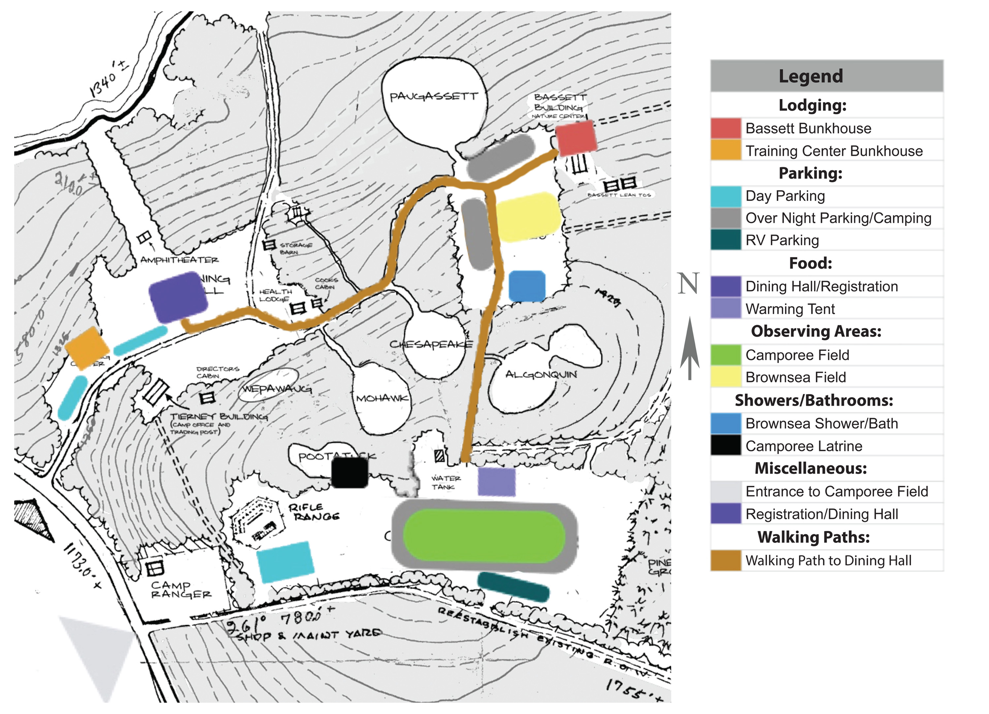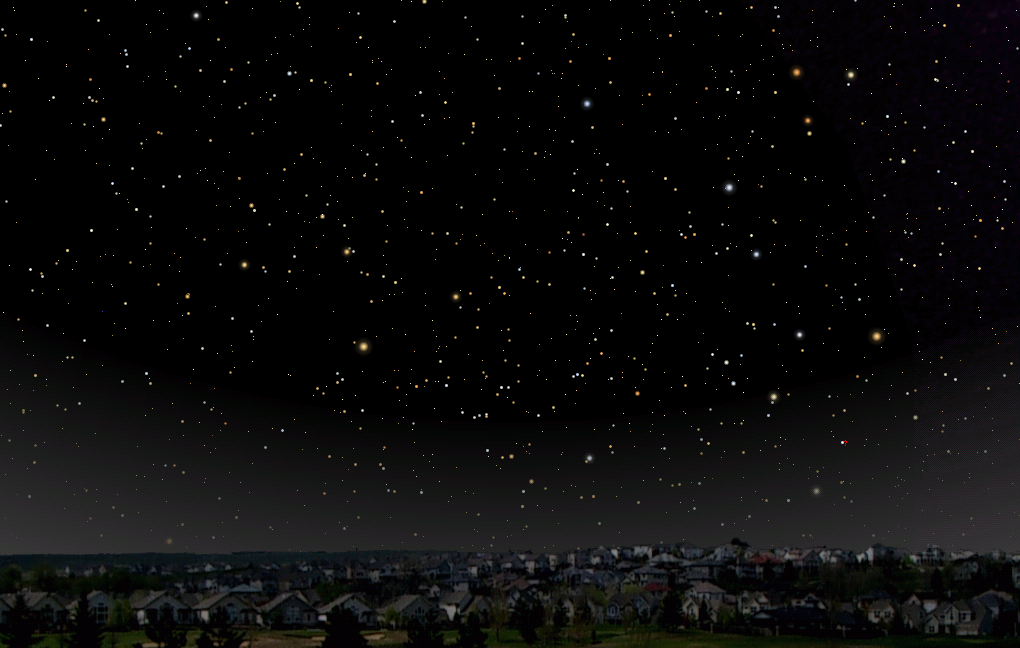Frequently asked questions about CSP location? Q: Will there be electrical service to the fields? A: There will be limited power supplied to a specific section of the Camporee Field. The power is for scopes, computers, cameras, and heat emitting diode dew heaters ONLY. There is power at the Shower house on the Brownsea field. It will only be available during the day. The sodium lights are on the same circuit as the power outlets and will be shut off during observing periods. Q: Are portable generators allowed? A: No portable generators are not allowed at this event. Q: Where will Registration be located? A: Registration will be in the Dining Hall instead of at the entrance. Find your spot and then register.. Q: Are there restrooms or portable facilities relatively close to where people will be camping? A: Each observing location has adequate latrine or restroom facilities nearby. Q: For attendees with limited mobility, where would the best place to camp be? A: There are two main fields for observing, and all are pretty widely spaced. Staff will be on hand to determine the best field choices for your needs. Q: How do I choose where I want to set up my scope? A: Setup sites are available on a first come first served basis. If you want to be near the showers, Brownsea is the best choice. If you don't mind camping and hiking, Camporee would be a good choice. Q: Are cars allowed on the fields? A: Yes. Each field has adjacent spots for general overnight parking. Anyone who is planning on leaving or entering after dusk will be required to use specified Day Parking areas. Instructions will be supplied for parking on each field. Larger vehicles and RVs will have specific areas defined for them depending on their size. Check with the CSP staff for larger vehicles. Q: Is there driving allowed between the fields? A: No. For safety concerns there will not be any driving between fields by attendees. Q: Is there cell phone service at the site? A: Yes, Major service providers have adequate service in most areas. Q: Is there WiFi service at the site? A: No. Q: Are the fields level? A: All fields have slight grades and level location. We will have the level locations marked off where you can set up your equipment. Q: What if we need to leave after dark? A: Not a problem. However you will need to make arrangements to park in the designated Day Parking areas. Q: Observing site changes? A: There will be no observing in the field next to the dining hall. This field is sloped and is next to the parking lot, where cars will be moving after dark. Q: Anything to consider not being on the meal plan? A: As with any wilderness camping area, there is wildlife. Keep your food locked up and secured when not in use. Q: What about hiking the area? A: There are abundant trails and wooded areas. Once you are outside the designated observing areas you are responsible for your safety and your return to the CSP camp area. Being on a Boy Scout reservation the standard rule is to use the buddy system. We recommend always travelling with at least one other person at all times especially if you venture outside of the CSP camp observing areas. Q: Where are the garbage can locations? A: Trash dumpsters are located at the main camp entrance and garbage cans are at the showers at Brownsea, both bunkhouses and the latrine at the Camporee field. Q: What to expect if you arrive on Friday A: There are a few things: - Friday registration opens at 3pm and closes at 9pm. - Observing time on Friday night starts at 9pm. - There is a designated Day Parking area for anyone not remaining after observing starts. - There are "Private Family Bunk" rooms. Only 2 rooms available on a first come first served basis. Q: What to expect if you arrive on Saturday A: There are a few things: - Saturday registration starts at 7:30am and closes at 8pm. - Observing time on Saturday night starts at 8pm. - There is a designated Day Parking area for anyone not remaining after observing starts. - There are "Private Family Bunk" rooms. Only 2 rooms available on a first come first served basis. |
|
Some Views of Camp Strang
|
|
|
Directions:

Address: 278 West Side Rd, Goshen, CT 06756 |
|
Catering service supply by Little Oak Cafe

|
|
Shirts Designed by Donna Pursley and Mike Zarick
printed by:

|
|
Camp Rules
Remember this is a Star Party to which all the members of families - including young children - are invited.
|
|
|
Activities for the weekend
|
||
|
|
|
|
CSP Past Experiences
|















